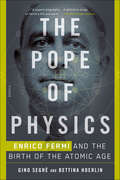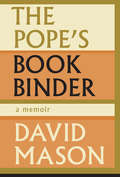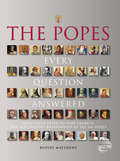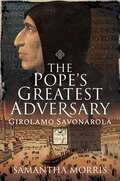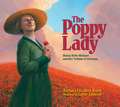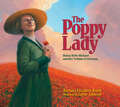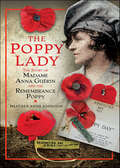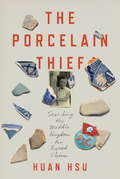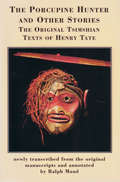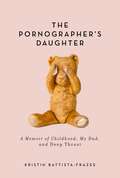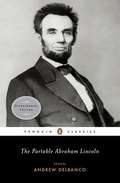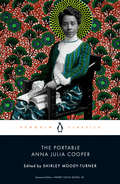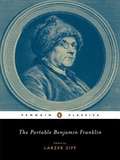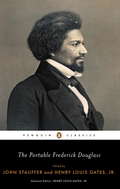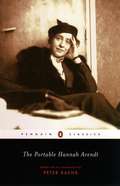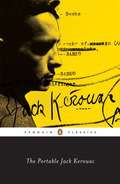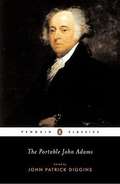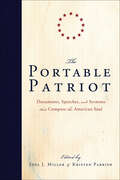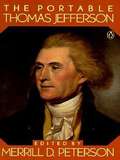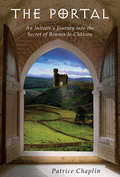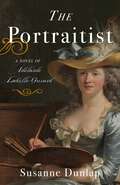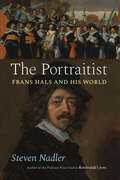- Table View
- List View
The Pope of Physics: Enrico Fermi and the Birth of the Atomic Age
by Gino Segrè Bettina HoerlinOne of Booklist’s Top 10 Science Books of the Year: “A superb biography . . . A definite study of Fermi’s life and work.” —The Wall Street JournalA Bloomberg Best Book of the YearA Finalist for Physics World’s Book of the YearA New York Times Book Review Editor’s ChoiceNobel Prize winner Enrico Fermi is unquestionably among the world’s greatest physicists, the most famous Italian scientist since Galileo. Called “the Pope” by his peers, he was regarded as infallible in his instincts and research. His discoveries changed our world; they led to weapons of mass destruction and, conversely, to life-saving medical interventions.This unassuming man struggled with issues relevant today, such as the threat of nuclear annihilation and the relationship of science to politics. Fleeing fascism and anti-Semitism, Fermi became a leading figure in America’s most secret project: building the atomic bomb. The last physicist who mastered all branches of the discipline, Fermi was a rare mixture of theorist and experimentalist. His rich legacy encompasses key advances in fields as diverse as cosmic rays, nuclear technology, and early computers.The Pope of Physics by Gino Segré and Bettina Hoerlin is “an engaging portrait of a man with boundless curiosity who delighted in his work” and an “entertaining and accessible biography of a scientist who deserves to be better understood” (Publishers Weekly, starred review).“Intimate, often charming stories of the famed physicist’s personal life . . . a book that’s both intelligent and extremely engaging.” —The Washington Post
The Pope's Bookbinder
by David Mason"Entertaining, moving, informative, intelligently hopeful: I know of few other books like this one to warm the cockles of a booklover's heart." -Alberto Manguel"For anyone who loves books too well-who lusts after them, lives in them, mainlines them-David Mason's memoir will be a fix from heaven. Heartful, cantankerous, droll, his tales of honour and obsession in the trade gratify the very book-love they portray. An irresistible read." -Dennis Lee"An atmospheric, informative memoir by a Canadian seller of used and rare books ... Gossipy, rambling and enchanting, alive with Mason's love for books of every variety."-Kirkus ReviewsFrom his drug-hazy, book-happy years near the Beat Hotel in Paris and throughout his career as antiquarian book dealer, David Mason brings us a storied life. He discovers his love of literature in a bathtub at age eleven, thumbing through stacks of lurid Signet paperbacks. At fifteen he's expelled from school. For the next decade and a half, he will work odd jobs, buck all authority, buy books more often than food, and float around Europe. He'll help gild a volume in white morocco for Pope John XXIII. And then, at the age of 30, after returning home to Canada and apprenticing with Joseph Patrick Books, David Mason will find his calling.Over the course of what is now a legendary international career, Mason shows unerring instincts for the logic of the trade. He makes good money from Canadian editions, both legitimate and pirated (turns out Canadian piracies so incensed Mark Twain that he moved to Montreal for six months to gain copyright protection). He outfoxes the cousins of L.M. Montgomery at auction and blackmails the head of the Royal Ontario Museum. He excoriates the bureaucratic pettiness that obstructs public acquisitions, he trumpets the ingenuity of collectors and scouts, and in archives around the world he appraises history in its unsifted and most moving forms. Above all, however, David Mason boldly campaigns for what he feels is the moral duty of the antiquarian trade: to preserve the history and traditions of all nations, and to assert without compromise that such histories have value. Sly, sparkling, and endearingly gruff, The Pope's Bookbinder is an engrossing memoir by a giant in the book trade-whose infectious enthusiasm, human insight, commercial shrewdness, and deadpan humour will delight bibliophiles for decades to come.
The Pope: Francis, Benedict, and the Decision That Shook the World
by Anthony McCartenFrom the Academy Award-nominated screenwriter of The Theory of Everything and Darkest Hour comes the fascinating and revealing tale of an unprecedented transfer of power, and of two very different men - who both happen to live in the Vatican. SOON TO BE A MAJOR MOTION PICTURE STARRING ANTHONY HOPKINS AND JONATHAN PRYCE. In February 2013, the arch-conservative Pope Benedict XVI made a startling announcement: he would resign, making him the first pope to willingly vacate his office in over 700 years. Reeling from the news, the College of Cardinals rushed to Rome to congregate in the Sistine Chapel to pick his successor. Their unlikely choice? Francis, the first non-European pope in 1,200 years, a one time tango club bouncer, a passionate soccer fan, a man with the common touch.Why did Benedict walk away at the height of power, knowing his successor might be someone whose views might undo his legacy? How did Francis - who used to ride the bus to work back in his native Buenos Aires - adjust to life as leader to a billion followers? If, as the Church teaches, the pope is infallible, how can two living popes who disagree on almost everything both be right? Having immersed himself in these men's lives to write the screenplay for the upcoming motion picture The Pope, Anthony McCarten masterfully weaves their stories into one gripping narrative. From Benedict and Francis's formative experiences in war-torn Germany and Argentina to the sexual abuse scandal that continues to rock the Church to its foundations to the intrigue and the occasional comedy of life in the Vatican, The Pope glitters with the darker and the lighter details of one of the world's most opaque but significant institutions.
The Popes: Every Question Answered
by Rupert MatthewsThis comprehensive historical reference covers the Apostolic Succession from St. Peter to Pope Francis, plus a selection of Papal Bulls and teachings.The papacy is a unique religious office. Lasting two millennia, it is one of the oldest and most enduring institutions in the world. The line of authority linking the current pope to the ministry of Jesus Christ has continued unbroken over the centuries.The Popes: Every Question Answered presents pertinent facts and fascinating details about all 266 popes, from St. Peter to Pope Francis I. Covering controversies, triumphs, and reforms from the Late Roman Period to the twenty-first century, this is an indispensable reference guide for theological students and people of all faiths.</
The Pope’s Greatest Adversary: Girolamo Savonarola
by Samantha MorrisOn 24 May 1497 Girolamo Savonarola was led out to a scaffold in the middle of the Piazza della Signoria. Crowds gathered around and watched as he was publically humiliated before being hanged and burned. But what did this man do that warranted such a horrendous death? Born on 21 September 1458 in Ferrara, Girolamo Savonarola would join the Dominican order of friars and find his way to the city of Florence. Run by the Medici family, the city was used to opulence and fast living but when the unassuming Dominican showed up, the people were unaware that he was about to take their world by storm. Preaching before the people of Florence to an increasingly packed out Cathedral, Savonarola came to be called a prophet. And when Charles VIII invaded Italy with his French army, one of his so called prophecies came true. It was enough for the people to sit up and take note, allowing this man to become the defacto ruler of Florence. Except Girolamo Savonarola made one very fatal mistake – he made an enemy of Alexander VI, the Borgia Pope, by preaching against his corruption and attempting to overthrow him. It would prove to be his ultimate undoing – the Pope turned the Florentines who had so loved the friar against him and he ended his days hanging above a raging inferno.
The Poppy Lady: Moina Belle Michael And Her Tribute To Veterans
by Barbara Elizabeth WalshThis is the inspiring story behind the Veterans Day red poppy, a symbol that honors the service and sacrifies of our veterans. When American soldiers entered World War I, Moina Belle Michael, a schoolteacher from Georgia, knew she had to act. Some of the soldiers were her students and friends. Almost single-handedly, Moina worked to establish the red poppy as the symbol to honor and remember soldiers. And she devoted the rest of her life to making sure the symbol would last forever and that symbol remains strong today.
The Poppy Lady: Moina Belle Michael and Her Tribute to Veterans
by Barbara E. WalshHere is the inspiring story behind the Veterans Day red poppy, a symbol that honors the service and sacrifices of our veterans.When American soldiers entered World War I, Moina Belle Michael, a schoolteacher from Georgia, knew she had to act. Some of the soldiers were her students and friends. Almost single-handedly, Moina worked to establish the red poppy as the symbol to honor and remember soldiers. And she devoted the rest of her life to making sure the symbol would last forever. Thanks to her hard work, that symbol remains strong today. Author Barbara Elizabeth Walsh and artist Layne Johnson worked with experts, primary documents, and Moina's great-nieces to better understand Moina's determination to honor the war veterans.A portion of the book's proceeds will support the National Military Family Association's Operation Purple®, which benefits children of the U.S. military.
The Poppy Lady: The Story of Madame Anna Guérin and the Remembrance Poppy
by Heather JohnsonMadame Anna Guérin is the fascinating personality behind the title ‘The Poppy Lady’. Her idea of the ‘Inter-Allied Poppy Day’ gave work to women and children in the devastated areas of France, in addition to offering support for First World War veterans. Born in 1878, she was an early feminist, becoming financially independent. During the First World War, and the immediate years after the Armistice, many people knew of Madame Guérin’s reputation as a selfless fundraiser for French and American charities. Her speeches inspired many people to make generous donations. Having had her name lost in the mists of time, this is the first biography of Madame E. Guérin. The book follows her extraordinary story as ‘The Poppy Lady’, a woman born before her time, but confined to anonymity for too long.
The Porcelain Thief
by Huan HsuA journalist travels throughout mainland China and Taiwan in search of his family's hidden treasure and comes to understand his ancestry as he never has before. In 1938, when the Japanese arrived in Huan Hsu's great-great-grandfather Liu's Yangtze River hometown of Xingang, Liu was forced to bury his valuables, including a vast collection of prized antique porcelain, and undertake a decades-long trek that would splinter the family over thousands of miles. Many years and upheavals later, Hsu, raised in Salt Lake City and armed only with curiosity, moves to China to work in his uncle's semiconductor chip business. Once there, a conversation with his grandmother, his last living link to dynastic China, ignites a desire to learn more about not only his lost ancestral heirlooms but also porcelain itself. Mastering the language enough to venture into the countryside, Hsu sets out to separate the layers of fact and fiction that have obscured both China and his heritage and finally complete his family's long march back home.Melding memoir, travelogue, and social and political history, The Porcelain Thief offers an intimate and unforgettable way to understand the complicated events that have defined China over the past two hundred years and provides a revealing, lively perspective on contemporary Chinese society from the point of view of a Chinese American coming to terms with his hyphenated identity.From the Hardcover edition.se history in the 19th and 20th century.From the Hardcover edition.
The Porcupine Hunter and Other Stories
by Ralph MaudHenry W. Tate (d. 1914), a Tsimshian informant to ethnographer Franz Boas, first wrote these stories in English before giving Boas Tsimshian equivalents between 1903 and 1913. Boas published them in the much-consulted ethnology classic, Tsimshian Mythology (1916). In Ralph Maud's selection of the best stories, now preserved closer to the way Tate originally intended, Tate emerges as creative writer.
The Pornographer's Daughter: A Memoir of Childhood, My Dad, and Deep Throat
by Kristin Battista-FrazeeMore than forty years after Deep Throat arrived on the cultural scene and inspired a sexual revolution, questions about the ethics of pornography and its impact on society are still being asked today and remain as controversial as ever. Kristin Battista-Frazee was only four years old in 1974 when her father, Anthony Battista, was indicted by the federal government for distributing the now famous porn film Deep Throat. As her father unexpectedly became an early pioneer in the emerging porn industry and transformed himself from Philadelphia stockbroker to porn broker, this indictment threatened his family's stability. The stress drove Kristin's mother, Frances Battista, to worry endlessly if her husband would be put in jail. She became so depressed that she attempted suicide.Kristin survived this family trauma to live a surprisingly normal life. But instead of leaving the past behind her, she developed a burning curiosity to understand her family's history. Why did the federal government so vehemently prosecute this case? And why did her father get involved in distributing this notorious porn film in the first place? Did the influence of pornography in fact make Kristin a better person? Answering these questions and reconciling her dramatic family history with her life as a wife and mother became her mission.The Pornographer's Daughter is an insider's glimpse into the events that made Deep Throat and pornography so popular, as well as what it was like to come of age against the backdrop of the pornography business.
The Portable Abraham Lincoln
by Abraham LincolnCelebrate the bicentennial of Abraham Lincoln's birth with this new edition of his greatest speeches and writings Abraham Lincoln endowed the American language with a vigor and moral energy that has all but disappeared from today's public rhetoric. Lincoln's writings are testaments of our history, windows into his enigmatic personality, and resonant examples of the writer's art. The Portable Abraham Lincoln contains the great public speeches-the first debate with Stephen Douglas, the "House Divided"speech, the Gettysburg Address, the Second Inaugural Address-along with less familiar letters and memoranda that chart Lincoln's political career, his evolving stand against slavery, and his day-to-day conduct of the Civil War. This edition includes a revised introduction, updated notes on the text, a chronology of Lincoln's life, and four new selections of his writing. .
The Portable Anna Julia Cooper
by Henry Louis GatesA collection of essential writings from the iconic foremother of Black women's intellectual history, feminism, and activism, who helped pave the way for modern social justice movements like Black Lives Matter and Say Her NameA Penguin ClassicThe Portable Anna Julia Cooper brings together, for the first time, Anna Julia Cooper's major collection of essays, A Voice from the South, along with several previously unpublished poems, plays, journalism and selected correspondences, including over thirty previously unpublished letters between Anna Julia Cooper and W. E. B. Du Bois. The Portable Anna Julia Cooper will introduce a new generation of readers to an educator, public intellectual, and community activist whose prescient insights and eloquent prose underlie some of the most important developments in modern American intellectual thought and African American social and political activism.Recognized as the iconic foremother of Black women's intellectual history and activism, Cooper (1858-1964) penned one of the most forceful and enduring statements of Black feminist thought to come of out of the nineteenth century. Attention to her work has grown exponentially over the years--her words have been memorialized in the US passport and, in 2009, she was commemorated with a US postal stamp. Cooper's writings on the centrality of Black girls and women to our larger national discourse has proved especially prescient in this moment of Black Lives Matter, Say Her Name, and the recent protests that have shaken the nation.
The Portable Benjamin Franklin
by Benjamin Franklin Larzer ZiffIt takes a very inclusive anthology to encompass the protean personality and range of interests of Benjamin Franklin, but The Portable Benjamin Franklin succeeds as no collection has. In addition to the complete Autobiography, the volume contains about 100 of Franklin’s major writings—essays, journalism, letters, political tracts, scientific observations, proposals for the improvement of civic and personal life, literary bagatelles, and private musings. The selections are reprinted in their entirety and organized chronologically within six sections that represent the full range of Franklin’s temperament. The result is a zestful read for Franklin scholars and anyone wanting to know and enjoy this American icon. First time in Penguin Classics Published to coincide with the 300th anniversary of Franklin's birthday The only anthology of its kind to present essays and letters of Franklin's in their entirety .
The Portable Frederick Douglass
by Frederick DouglassA new collection of the seminal writings and speeches of a legendary writer, orator, and civil rights leader This compact volume offers a full course on the remarkable, diverse career of Frederick Douglass, letting us hear once more a necessary historical figure whose guiding voice is needed now as urgently as ever. Edited by renowned scholar Henry Louis Gates, Jr., and Pulitzer Prize–nominated historian John Stauffer, The Portable Frederick Douglass includes the full range of Douglass&’s works: the complete Narrative of the Life of Frederick Douglass, as well as extracts from My Bondage and My Freedom and Life and Times of Frederick Douglass; The Heroic Slave, one of the first works of African American fiction; the brilliant speeches that launched his political career and that constitute the greatest oratory of the Civil War era; and his journalism, which ranges from cultural and political critique (including his early support for women&’s equality) to law, history, philosophy, literature, art, and international affairs, including a never-before-published essay on Haitian revolutionary Toussaint L&’Ouverture. The Portable Frederick Douglass is the latest addition in a series of African American classics curated by Henry Louis Gates, Jr. First published in 2008, the series reflects a selection of great works of fiction, nonfiction, and poetry by African and African American authors introduced and annotated by leading scholars and acclaimed writers in new or updated editions for Penguin Classics. In his series essay, &“What Is an African American Classic?&” Gates provides a broader view of the canon of classics of African American literature available from Penguin Classics and beyond. Gates writes, &“These texts reveal the human universal through the African American particular: all true art, all classics do this; this is what &‘art&’ is, a revelation of that which makes each of us sublimely human, rendered in the minute details of the actions and thoughts and feelings of a compelling character embedded in a time and place.&” For more than seventy years, Penguin has been the leading publisher of classic literature in the English-speaking world. With more than 1,700 titles, Penguin Classics represents a global bookshelf of the best works throughout history and across genres and disciplines. Readers trust the series to provide authoritative texts enhanced by introductions and notes by distinguished scholars and contemporary authors, as well as up-to-date translations by award-winning translators.
The Portable Hannah Arendt
by Hannah ArendtThis biography includes generous selections from The Origins of Totalitarianism, The Human Condition, and her controversial Eichmann in Jerusalem. It also includes selection of Arendt's letters to other formative thinkers of the century.
The Portable Jack Kerouac
by Jack Kerouac Ann Charters"The Portable Jack Kerouac" made clear the ambition and accomplishment of Kerouac's Legend of Duluoz, the story of his life told in his many true story novels.
The Portable John Adams
by John Adams Jack DigginsIn addition to being an uncompromising defender of liberty, esteemed diplomat, and successor to George Washington, John Adams was a passionate and prolific writer. Adams biographer John Patrick Diggins gathers an impressive variety of his works in this compact, original volume, including parts of his diary and autobiography, and selections from his rich correspondence with this wife, Abigail, Thomas Jefferson, and others. The Portable John Adams also features his most important political works: "A Dissertation on Canon and Feudal Law," "Thoughts on Government," "A Defense of Constitutions," "Novanglus," and "Discources in Davila." There is no finer introduction to the protean genius of this seminal American philosopher. First time in Penguin Classics
The Portable Patriot: Documents, Speeches, and Sermons that Compose the American Soul
by Joel J. Miller & Kristen ParrishWhat does it mean to think, believe, and act like an American? Get the Declaration of Independence, the Constitution, the Bill of Rights, and other important United States historical documents all in one book!The soul of America is far more than a concept—it is a people. Even the most sacred principles mean very little unless lived out passionately by an informed citizenry. In The Portable Patriot you&’ll find a carefully assembled sampling of American history&’s most formative words, written by the people who made that extraordinary history—George Washington, Alexander Hamilton, Benjamin Franklin, and many more of America's Founding Fathers. Speeches and sermons, essays and extracts, poems and proclamations illumine such values as independence, virtue, humility, bravery, thrift, prayer, enterprise, liberty, and reliance on God. While peering back to the cradle of America&’s national identity, The Portable Patriot also points a way forward, compelling us to heed poet John Dickinson&’s plea to &“rouse your bold hearts at fair Liberty&’s call.&”&“Nothing ignites a patriot&’s heart—or the hope that the truths of our founding era will prevail again—like the documents assembled in The Portable Patriot. How grateful we should be, and how quick to make these historic words our own.&” ?Stephen Mansfield, author, The Forgotten Founding Father and The Faith of the American Soldier&“Our current struggles over taxation, federal debt, and limited government are part of a larger American story. Kudos to Miller and Parrish for highlighting these essential passages.&” ?Hon. Andrew P. Napolitano, Senior Judicial Analyst, Fox News Channel
The Portable Thomas Jefferson
by Thomas JeffersonIncludes A Summary View of the Rights of British America and Notes on the State of Virginia complete; seventy-nine letters; "Response to the Citizens of Albemarle," 1790; "Opinion on the Constitutionality of a National Bank," 1791; and many other writings.
The Portal
by Patrice ChaplinThe true-life memoir Patrice Chaplin began in City of Secrets continues here in the story of her spiritual initiation into the Kabbalistic tradition preserved since the Middle Ages by a secret society in the pre-Roman city of Girona, Spain. Salvador Dalí was a member of that society, as was the renowned author Umberto Eco, the filmmaker Jean Cocteau, and Jancint Verdeguer, one of the most celebrated Catalan poets. Importantly, so was the mysterious Berenger Sauniere, the priest who in the late 1800s built Rennes-le-Château in southern France, with the Tour Magdala, a tower that is twin to the neo-gothic tower in Girona. In this gripping story that reads like the adventures of a female Castenada, Chaplin is led through a series of initiatory stages which correspond to the magical square of Venus, containing the constellation of the Great Bear.
The Porter of St. Bonaventure's
by James Patrick DerumThis is a well-researched biography of a deeply righteous and truly humble priest. It traces his life from childhood in the Western United States, through his labors in the lumber mills and the railroads, to his priestly vocations with his many sufferings, then to the enormous influence he had on thousands of people.
The Portraitist: A Novel of Adelaide Labille-Guiard
by Susanne DunlapBased on a true story, this is the tale of Adélaïde Labille-Guiard’s fight to take her rightful place in the competitive art world of eighteenth-century Paris. With a beautiful rival who’s better connected and better trained than she is, Adélaïde faces an uphill battle. Her love affair with her young instructor in oil painting gives rise to suspicions that he touches up her work, and her decision to make much-needed money by executing erotic pastels threatens to create as many problems as it solves. Meanwhile, her rival goes from strength to strength, becoming Marie Antoinette’s official portraitist and gaining entrance to the elite Académie Royale at the same time as Adélaïde. When at last Adélaïde earns her own royal appointment and receives a massive commission from a member of the royal family, the timing couldn’t be worse: it’s 1789, and with the fall of the Bastille her world is turned upside down by political chaos and revolution. With danger around every corner in her beloved Paris, she must find a way adjust to the new order, carving out a life and a career all over again—and stay alive in the process.
The Portraitist: Frans Hals and His World
by Steven NadlerA biography of the great portraitist Frans Hals that takes the reader into the turbulent world of the Dutch Golden Age. Frans Hals was one of the greatest portrait painters in history, and his style transformed ideas and expectations about what portraiture can do and what a painting should look like. Hals was a member of the great trifecta of Dutch Baroque painters alongside Rembrandt and Vermeer, and he was the portraitist of choice for entrepreneurs, merchants, professionals, theologians, intellectuals, militiamen, and even his fellow artists in the Dutch Golden Age. His works, with their visible brush strokes and bold execution, lacked the fine detail and smooth finish common among his peers, and some dismissed his works as sloppy and unfinished. But for others, they were fresh and exciting, filled with a sense of the sitter’s animated presence captured with energy and immediacy. Steven Nadler gives us the first full-length biography of Hals in many years and offers a view into seventeenth-century Haarlem and this culturally rich era of the Dutch Republic. He tells the story not only of Hals’s life, but also of the artistic, social, political, and religious worlds in which he lived and worked.
The Portraitist: Frans Hals and His World
by Steven NadlerA biography of the great portraitist Frans Hals that takes the reader into the turbulent world of the Dutch Golden Age. Frans Hals was one of the greatest portrait painters in history, and his style transformed ideas and expectations about what portraiture can do and what a painting should look like. Hals was a member of the great trifecta of Dutch Baroque painters alongside Rembrandt and Vermeer, and he was the portraitist of choice for entrepreneurs, merchants, professionals, theologians, intellectuals, militiamen, and even his fellow artists in the Dutch Golden Age. His works, with their visible brush strokes and bold execution, lacked the fine detail and smooth finish common among his peers, and some dismissed his works as sloppy and unfinished. But for others, they were fresh and exciting, filled with a sense of the sitter’s animated presence captured with energy and immediacy. Steven Nadler gives us the first full-length biography of Hals in many years and offers a view into seventeenth-century Haarlem and this culturally rich era of the Dutch Republic. He tells the story not only of Hals’s life, but also of the artistic, social, political, and religious worlds in which he lived and worked.
